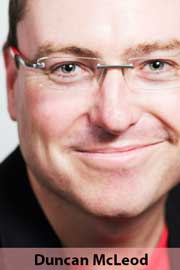 Two weeks ago, Icasa provisionally awarded licences to five new subscription television broadcasters. It hopes the move will help crack open what has become a highly concentrated market that is now thoroughly dominated by one operator, MultiChoice.
Two weeks ago, Icasa provisionally awarded licences to five new subscription television broadcasters. It hopes the move will help crack open what has become a highly concentrated market that is now thoroughly dominated by one operator, MultiChoice.
The communications regulator will be hoping that it is more successful in this latest round of licensing. Of four new pay-TV licences awarded in a similar process about seven years ago, only one — TopTV (now StarSat), owned by On Digital Media — actually launched a commercial service. And it barely survived: it’s now in a lengthy and complicated business rescue process.
The other successful licensees simply withdrew from the market. E.tv sister company eSat beat a tactical retreat, deciding that the market, with four new players, would be too competitive, electing instead to launch a 24-hour news channel in a sweet deal with MultiChoice.
Another player, Walking on Water Television, which was meant as a Christian-based, family values-focused service, went quiet – presumably because it was unable to raise the capital it needed.
Telkom was quite the opposite with Telkom Media, a hare-brained scheme by the fixed-line telecommunications operator (it cooked up a lot of them at the time) to take on MultiChoice head-on in a business it barely understood. After pumping hundreds of millions of rand into the ill-fated venture, Telkom pulled the plug.
Fast-forward to 2014 and Icasa is back for another go at opening the market.
This time around, things are a little different, though. In 2008, the prospective licensees all planned to offer satellite-based pay-TV services (with Telkom Media also working on delivering programming over its fixed broadband network). The latest batch of licensees intends using digital terrestrial TV (broadcasts from ground-based towers rather than satellites) as their preferred platform.
South Africa’s migration from analogue to digital terrestrial TV has been held up for years, most recently by the damaging fight between MultiChoice and e.tv over the arcane issue of set-top box control. But when digital broadcasts are eventually switched on commercially – and hopefully this will happen quickly now that the election is over – it will open the way for new broadcasters to enter the sector.
As with 2008’s crop of licensees, their success, of course, is not guaranteed. Indeed, Icasa, perhaps wary of repeating history, has asked the five new operators to furnish a range of additional information before making the licences permanent. Importantly, it wants most of the provisional licensees to submit proof, in the form of written guarantees, that they have the necessary funding.
The five prospective broadcasters are a mixed bag. None, however, intends taking on MultiChoice at the top end of the market. Instead, they’re targeting audiences in lower living standards measures.
There’s Kagiso TV, part of Kagiso Media (it owns Jacaranda, East Coast Radio, Howzit MSN and other media assets), which intends offering a service with a high level of content to lower-and middle-income households with packages that cost less than R240/month.
Another potentially strong candidate is Siyaya, a media consortium whose main shareholder is the Bakgatla Ba Kgafela tribe in North West. It wants to offer local content, with a strong focus on football, for a monthly subscription fee starting at just R70/month.

More specialised is CloseTV, which hopes to target South Africa’s gay, lesbian and transgender communities, and Mobile TV, which, as its name suggests, wants to offer digital TV broadcasts to mobile devices using Korean technology called digital multimedia broadcasting as well as radio broadcasts using a digital rival to FM transmission.
The fifth licensee is Mindset Media Enterprises, which produces educational material. It must still submit a detailed business plan to Icasa, which is concerned about its sustainability, particularly its plan to offer access to its content for only R1/month.
The new entrants, if they come to market, will find the going tough. MultiChoice, which now offers channel bouquets that suit a greater range of pockets, also intends offering subscription-based terrestrial bouquets. And e.tv and the SABC intend offering many more free-to-air channels over the new digital platform.
Consumer choice in television is about to expand enormously. The five new prospective broadcasters will have to work damn hard if they hope to make it.
- Duncan McLeod is editor of TechCentral. Find him on Twitter
- This column was first published in the Sunday Times




